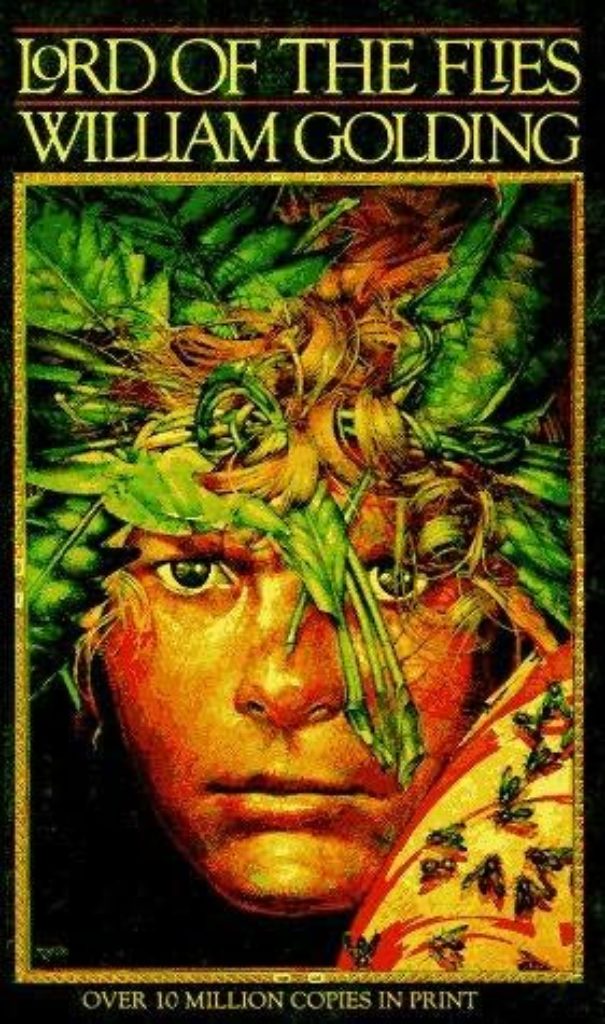Welcome, fellow literary enthusiasts to this Lord of the Flies summary, another captivating journey through the realm of classic literature. This week, we delve into the haunting and thought-provoking world of William Golding’s Lord of the Flies. Prepare to explore the depths of human nature, morality, and civilization as we navigate the treacherous landscape of a deserted island. Join us as we unravel the complexities of this iconic novel and uncover the profound insights it offers into the human condition.

Lord of the Flies Summary
As we delve into the pages of Lord of the Flies, we are transported to a remote tropical island, where a group of British schoolboys find themselves stranded without adult supervision. What begins as a seemingly idyllic adventure quickly descends into chaos and savagery, as the boys grapple with their primal instincts and struggle to maintain order. This timeless novel continues to resonate with readers for its exploration of power, morality, and the inherent darkness that lurks within us all.
Lord of the Flies follows a group of boys who are stranded on an uninhabited island after a plane crash. Led by the charismatic Ralph, the boys attempt to establish a sense of order and civilization. However, their efforts are soon undermined by the emergence of Jack, a power-hungry bully, who leads a rival faction. As the boys descend into savagery and violence, their primal instincts take hold, leading to a tragic and devastating conclusion. Set against the backdrop of a tropical paradise turned dystopian nightmare, Lord of the Flies is a chilling exploration of the darkness that resides within us all.
Lord of the Flies Character List and Descriptions
Ralph:
The charismatic and level-headed leader of the boys, Ralph represents order, civilization, and democracy. His desire to maintain a signal fire and establish rules reflects his commitment to maintaining a sense of order and hope.
Jack:
The antagonist of the novel, Jack is a domineering and manipulative boy who leads the rival faction of hunters. His descent into savagery and obsession with hunting symbolize the darker aspects of human nature and the allure of power.
Piggy:
Ralph’s loyal but physically weak companion, Piggy is the voice of reason and intellect on the island. His glasses, which are used to start fires, symbolize the power of technology and rationality in the face of chaos and superstition.
Simon:
The introspective and compassionate member of the group, Simon represents spirituality and moral goodness. His tragic death at the hands of the other boys underscores the novel’s exploration of the destructive nature of fear and ignorance.
Roger:
Jack’s sadistic and violent lieutenant, Roger represents unrestrained brutality and the loss of moral inhibition. His transformation from a timid follower to a remorseless killer highlights the corrupting influence of power and the erosion of societal norms.
Lord of the Flies Themes
Civilization vs. Savagery:
One of the central themes of “Lord of the Flies” is the conflict between civilization and savagery. The boys’ descent into barbarism reflects the fragility of societal norms and the primal instincts that lie beneath the surface of human civilization.
Power and Authority:
The novel explores the dynamics of power and authority, as the boys struggle to establish a system of governance on the island. Jack’s ruthless pursuit of power and Ralph’s attempts to maintain order highlight the corrupting influence of authority and the fragility of leadership.
Fear and Violence:
Fear and violence permeate the novel, as the boys’ primitive instincts and insecurities lead to escalating tensions and conflicts. The brutal murder of Piggy and Simon’s tragic demise underscore the destructive power of fear and the breakdown of moral restraint.
Loss of Innocence:
“Lord of the Flies” explores the loss of innocence as the boys confront the harsh realities of survival and human nature. Their descent into savagery and the betrayal of their childhood ideals highlight the inevitable loss of innocence that accompanies the transition to adulthood.
The Beast Within:
The novel grapples with the concept of the “beast within,” as the boys confront their own inner darkness and primal instincts. The figure of the “beast” becomes a symbol of the boys’ collective fear and descent into savagery, reflecting the inherent capacity for evil that exists within us all.
Conclusion
In conclusion, Lord of the Flies remains a haunting and thought-provoking exploration of human nature, morality, and the darkness that lurks within us all. Golding’s masterful storytelling and vivid characters continue to resonate with readers, inviting us to confront the deeper truths of the human condition. Join us for more literary adventures and insightful discussions right here at Curvebreakers!
Looking for additional resources? Check out our comprehensive AP English Language and Writing study guide for more assistance on your literary journey. Happy reading!
